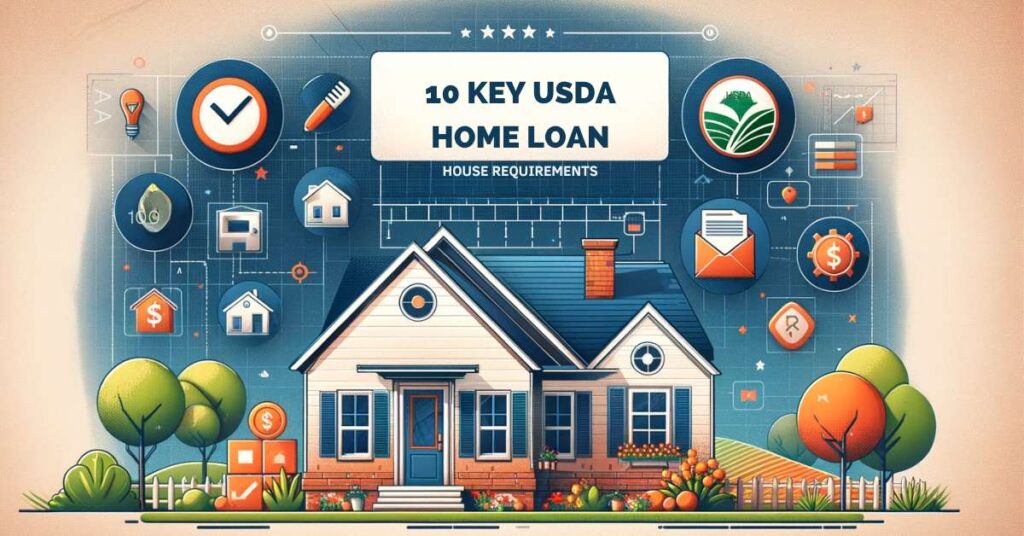Introduction
Navigating the world of home loans can often feel like an overwhelming task, especially when dealing with specific loan types like USDA home loans. In my experience, understanding the precise requirements for a USDA home loan is crucial for a smooth application process. This type of loan is a fantastic option for those looking to buy a home in rural areas, offering benefits such as no down payment and lower interest rates. Below, I’ll outline the 10 key house requirements for a USDA home loan, providing you with the necessary insights to take this important step in your homeownership journey.
- Location Eligibility:
The property must be located in an area that is designated as rural by the USDA. This doesn’t always mean farmland; many suburban areas also qualify. - Primary Residence Requirement:
USDA loans are only available for properties that will be used as a primary residence. Investment properties and vacation homes are not eligible. - Size and Safety:
The home must be modest in size, design, and cost. It should also meet the USDA’s safety and sanitation standards, ensuring a safe living environment. - Adequate Utilities and Water:
The property must have access to essential utilities like water, electricity, sewage, and heating. Safe drinking water and functional wastewater disposal systems are a must. - Functional and Modern Facilities:
Kitchens and bathrooms need to be modern and functional. Outdated or non-functional facilities can disqualify a home from USDA loan eligibility. - Structural Soundness:
The house should be structurally sound with no significant physical defects or hazards. This includes a stable roof, foundation, and walls. - Access to Roads and Streets:
There must be legal, all-weather access to the property, ensuring that the home is accessible throughout the year. - Pest and Termite-Free:
The home should be free from termite and other significant pest damage. In many cases, a pest inspection is required to confirm this. - No Income-Producing Facilities:
Properties with features that can be used for income production (like a large agricultural facility) are typically ineligible for USDA loans. - Compliance with Local and State Codes:
The property must comply with all local and state zoning and building codes. Non-compliance can be a dealbreaker for loan approval.
Conclusion:
Navigating the requirements for a USDA home loan doesn’t have to be a daunting task. By understanding these key house requirements, you’re better positioned to find a home that aligns with your needs while meeting USDA standards. Remember, the goal of a USDA home loan is to aid in rural development and provide affordable homeownership opportunities. With this knowledge, I strongly believe you’re on the right path to securing your dream home with the support of a USDA loan.

Too discrete to give his real age (but certainly in the grizzled veteran bracket), Tom is an Army brat who spent much of his childhood overseas. After moving back to Florida in the 80’s with his family, Tom worked a variety of jobs after college before finding his calling in the mortgage industry. Now, adding his decades worth of experience to this site, Tom hopes to help others with his knowledge.
After working through the 2008 crisis in a hard hit bank, Tom knows only too well the impact his industry has on people’s lives. Now semi-retired, Tom spends his days keeping up with the latest news in the mortgage industry (and finding the odd hour or three to fish).
